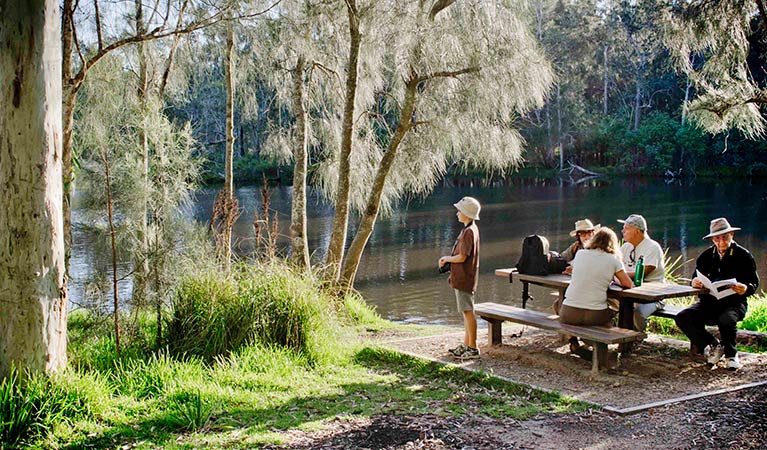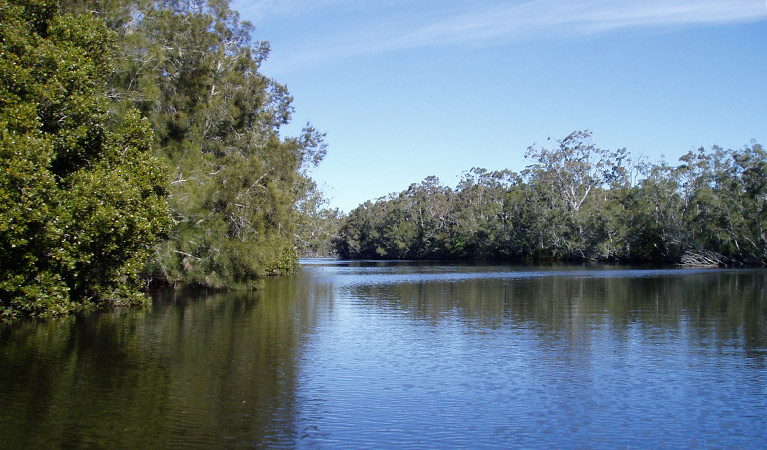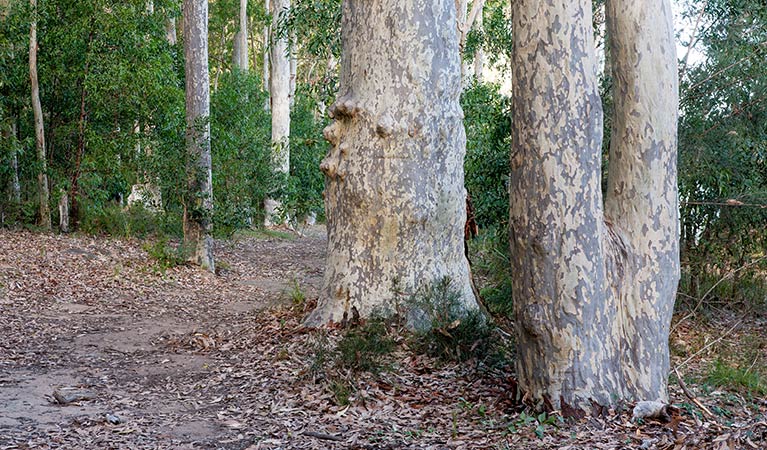Anabranch loop track
Corramy Regional Park
Learn more
Learn more about why this park is special
Anabranch loop track is in Corramy Regional Park. Here are just some of the reasons why this park is special:
A natural playground

Even as it preserves important species of plants and animals, Corramy Regional Park offers terrific recreation opportunities in easy reach of towns between Nowra and Ulladulla. Within or around the park, visitors can enjoy cycling, horse riding, picnicking, fishing or kayaking on the foreshores and waterways like St Georges Basin.
- Wandandian Creek Wandandian Creek is an easily accessible waterway that offers several branching directions for a variety of activities including paddling, fishing, kayaking and birdwatching.
Aboriginal heritage

'Corramy' is the Aboriginal name for the local area. Because of its diverse environments, the area provided a variety of resources for Aboriginal people.
Preserving our threatened species

Corramy Regional Park may be just down the road from several small townships, but it plays a critical role in preserving natural diversity. There are two endangered ecological communities in the park: swamp oak floodplain forest, growing along the foreshore of Wandandian Creek; and river-flat eucalypt forest with stands of red gum. Strolling in the regional park is to stroll through a precious reserve of these trees. Corramy is also home to threatened animals, with yellow-bellied gliders and glossy black cockatoos recorded in the area. Take a camera and keep your eyes peeled, but be careful not to disturb their habitat.
- Delta track The longer of the two walks near Wandandian Creek, near Nowra, Delta track follows the foreshore for 1.5km, crossing two beaches with opportunities for fishing and birdwatching.
Plants and animals protected in this park
Animals
-

Sugar glider (Petaurus breviceps)
The sugar glider is a tree-dwelling Australian native marsupial, found in tall eucalypt forests and woodlands along eastern NSW. The nocturnal sugar glider feeds on insects and birds, and satisfies its sweet tooth with nectar and pollens.
-

Southern boobook (Ninox novaeseelandiae)
The southern boobook, also known as the mopoke, is the smallest and most common native owl in Australia. With a musical 'boo-book' call that echoes through forests and woodlands, the southern boobook is a great one to look out for while bird watching.
-

Long-nosed bandicoot (Perameles nasuta)
A nocturnal marsupial and one of the smaller Australian native animals, the long-nosed bandicoot is found across eastern Australia. Populations in the Sydney region have dwindled since European settlement, leaving only endangered colonies in inner western Sydney and at North Head, near Manly. The long-nosed bandicoot has grey-brown fur and a pointed snout which it uses to forage for worms and insects.
Plants
-

Black sheoak (Allocasuarina littoralis)
The black sheoak is one of a number of casuarina species found across the east coast of Australia and nearby tablelands. Growing to a height of 5-15m, these hardy Australian native plants can survive in poor or sandy soils. The barrel-shaped cone of the black sheoak grows to 10-30mm long.
Look out for...
Black sheoak
Allocasuarina littoralis

The black sheoak is one of a number of casuarina species found across the east coast of Australia and nearby tablelands. Growing to a height of 5-15m, these hardy Australian native plants can survive in poor or sandy soils. The barrel-shaped cone of the black sheoak grows to 10-30mm long.
